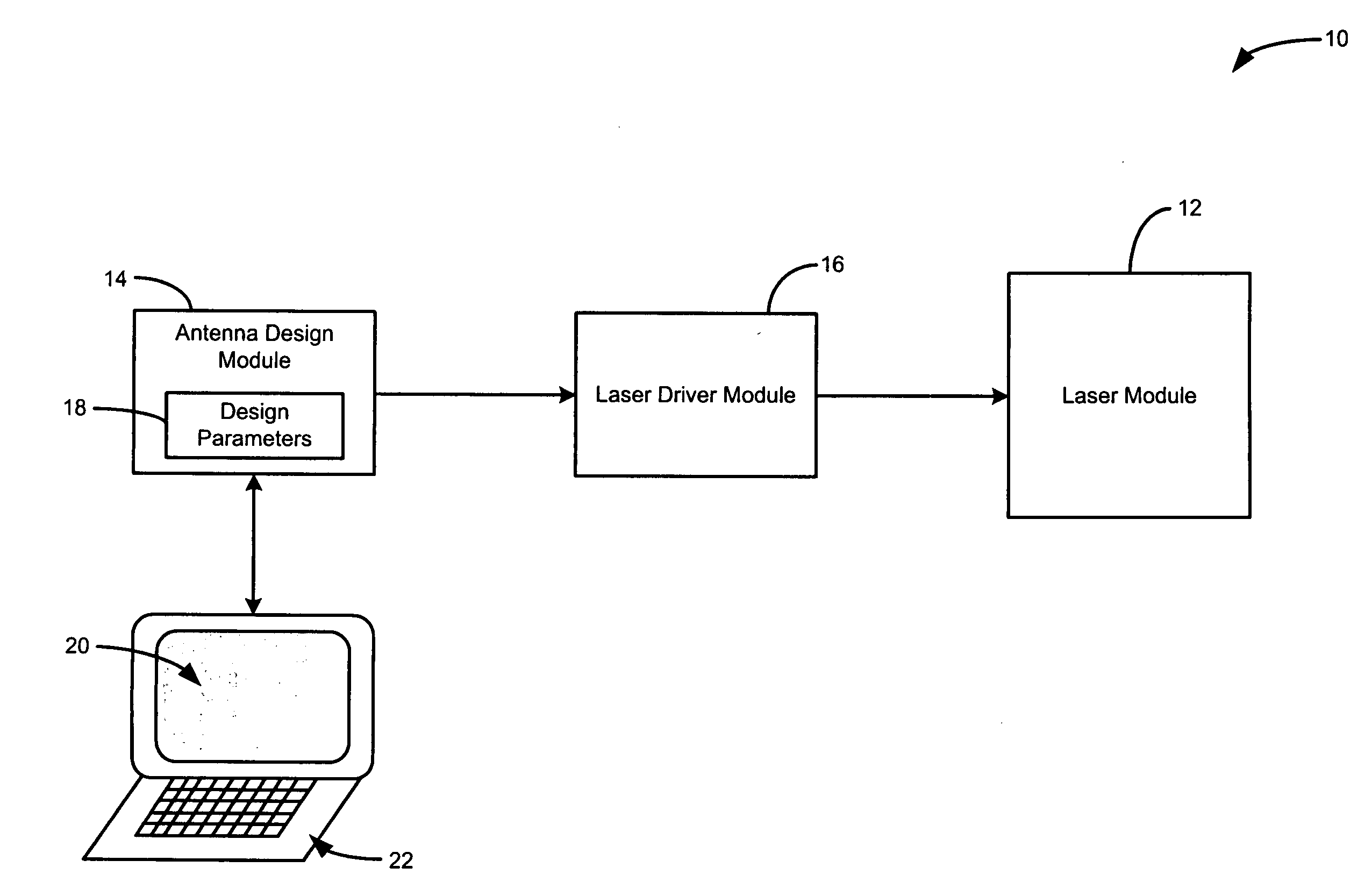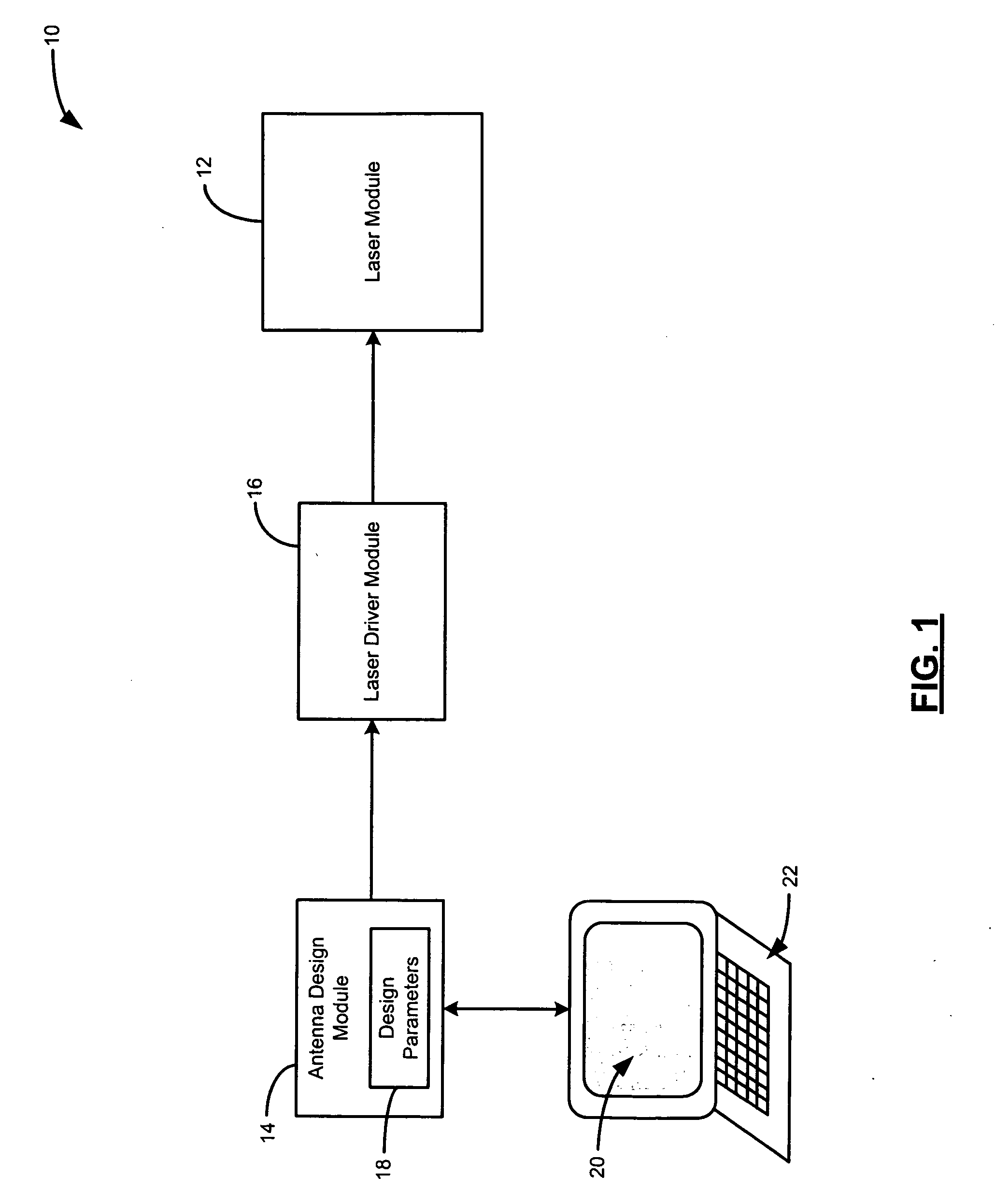Laser ablation prototyping of RFID antennas
a technology of rfid antennas and laser ablation, which is applied in the direction of burglar alarm mechanical actuation, removal of conductive materials by irradiation, instruments, etc., can solve the problems of limiting the resolution of the design, preventing theft, counterfeiting, and not allowing “touch-free” tracking
- Summary
- Abstract
- Description
- Claims
- Application Information
AI Technical Summary
Benefits of technology
Problems solved by technology
Method used
Image
Examples
Embodiment Construction
[0022] The following description of the preferred embodiment(s) is merely exemplary in nature and is in no way intended to limit the invention, its application, or uses. For purposes of clarity, the same reference numbers will be used in the drawings to identify similar elements. As used herein, the term module refers to an application specific integrated circuit (ASIC), an electronic circuit, a processor (shared, dedicated, or group) and memory that execute one or more software or firmware programs, a combinational logic circuit, and / or other suitable components that provide the described functionality.
[0023] Laser ablation, in the broadest sense, is removal of material due to incident light. In most metals and glasses / crystals the removal is by vaporization of the material due to heat. In polymers the material can be removed by exposure to laser emissions at a wavelength where the polymer strongly absorbs photons. Ablation occurs when chemical bonds are broken in the polymer. In ...
PUM
| Property | Measurement | Unit |
|---|---|---|
| frequencies | aaaaa | aaaaa |
| frequency | aaaaa | aaaaa |
| frequency | aaaaa | aaaaa |
Abstract
Description
Claims
Application Information
 Login to View More
Login to View More - R&D
- Intellectual Property
- Life Sciences
- Materials
- Tech Scout
- Unparalleled Data Quality
- Higher Quality Content
- 60% Fewer Hallucinations
Browse by: Latest US Patents, China's latest patents, Technical Efficacy Thesaurus, Application Domain, Technology Topic, Popular Technical Reports.
© 2025 PatSnap. All rights reserved.Legal|Privacy policy|Modern Slavery Act Transparency Statement|Sitemap|About US| Contact US: help@patsnap.com



